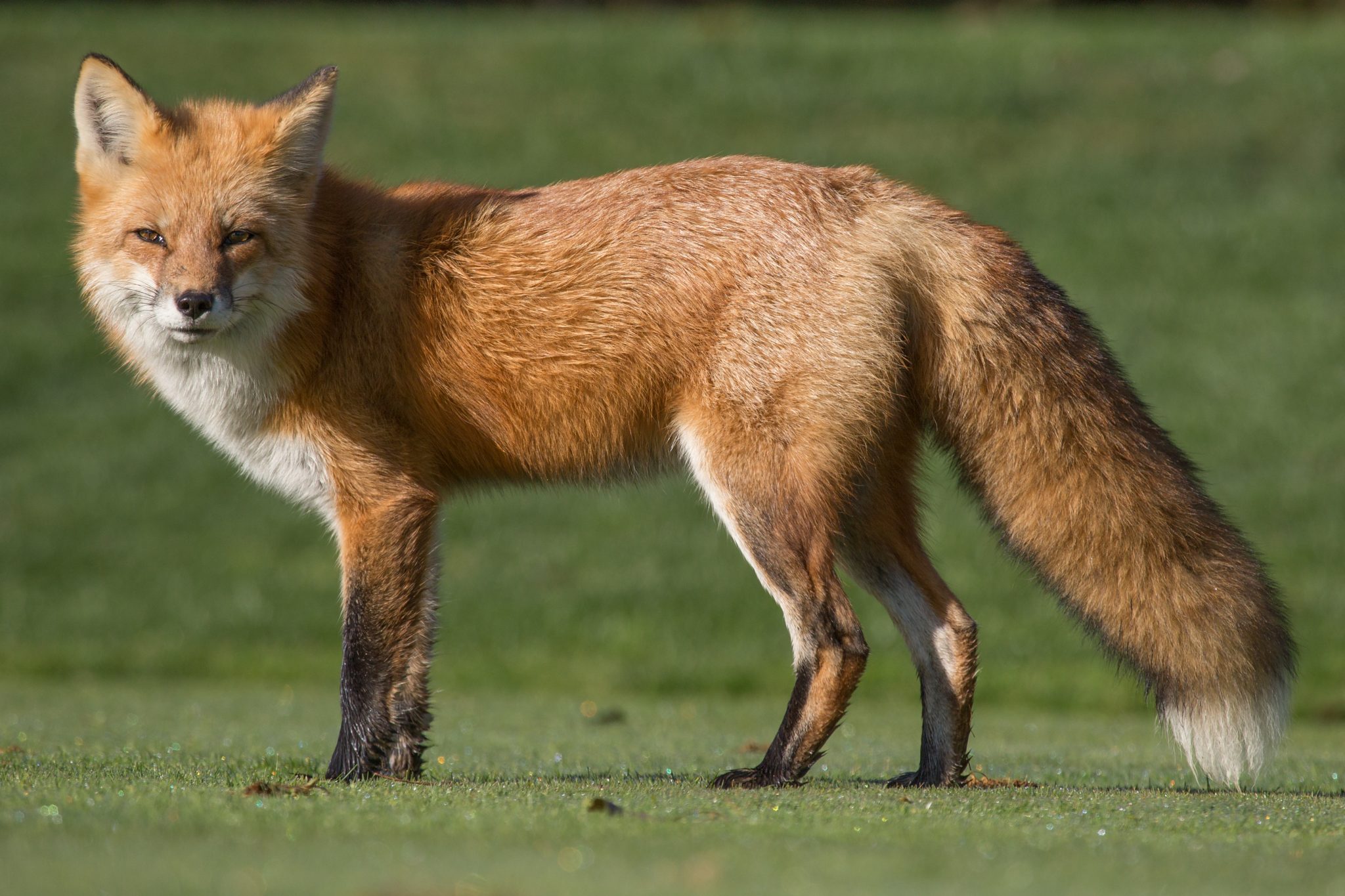Forestry & Wildlife

Learn to identify Alabama’s red fox and gray fox, their habitat and behavior, identification of damage and safety concerns, damage prevention and control, and proper handling techniques.

Figure 1. Red fox (Vulpes vulpes).
Two species of fox occur in Alabama—the red fox (Vulpes vulpes) and the gray fox (Urocyon cinereoargenteus). They are similar in size and can sometimes be difficult to distinguish. The red fox is the most common species of fox native to North America. It is widely distributed throughout much of Canada and the United States, except for a few isolated areas. The distribution of the gray fox spans most of the United States, excluding part of the northern Rocky Mountains. Predators of both species include bobcats, coyotes, and golden eagles. Pups have more predators, including great horned owls and possibly large hawks.
It is unclear whether red foxes are native to North America. Some scientists think they were native to the northern part of North America but were scarce or absent in most hardwood forests where gray foxes were abundant. Because of significant landscape conversion following European settlement, a natural southward expansion of native foxes may have coincided with habitat changes in the region caused by the presence of humans. Others believe that the North American red fox is a hybrid between the scarce native population and the European red fox, which was introduced into the southeastern United States around 1750. The gray fox is native to North America. It has expanded its range in the last 50 years to areas formerly unoccupied by the species and where it had previously been eliminated.
Fox Identification
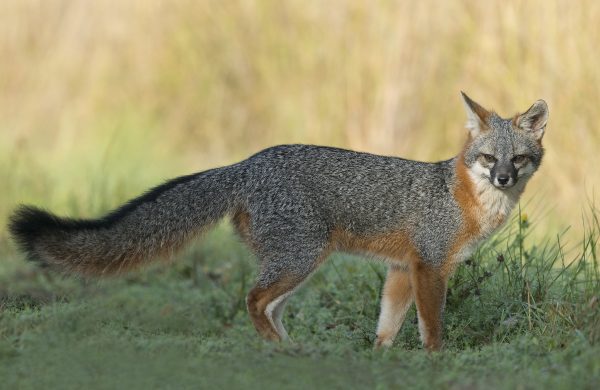
Figure 2. Gray fox (Urocyon cinereoargenteus).
The red fox is more dog-like in appearance with pointed ears, thick fur, and a heavily furred, bushy tail (figure 1). As its name implies, the red fox has a red-orange coat with a white tip on the end of its tail and white on its throat. The red fox has black legs, black fur peppering its tail, and black-tipped ears. Its muzzle is elongated and pointed. A red fox weighs 7 to 15 pounds, with males slightly heavier than females.
The gray fox coat is peppered gray with small highlights of reddish-brown on the neck, sides, and legs (figure 2). Individual white, black, and gray guard hairs on its back and sides give the gray fox this salt-and-pepper appearance. The underside of the gray fox is lighter in color, with some white on the throat. The tail and tips of the ears are black with a ridgelike section of course black guard hairs on the dorsal surface of the tail. Gray foxes can weigh from 7 to 13 pounds.
Fox signs can easily be confused with coyotes or domestic dogs, especially when each species is found in urban and suburban environments (figure 3). Fox and coyote tracks usually follow a single track, with back paws placed in the front paws’ tracks, while domestic dog tracks are typically wide and staggered. A single fox track is approximately 1 1⁄2 to 2 inches long, while a coyote track might be approximately 2 1⁄2 to 3 inches long. The size of domestic dog tracks can vary widely. Scat can be used to identify fox presence as well. Fox scat may be about 3⁄8 to 5⁄8 inches in diameter and about 2 inches long. Coyote scat will be a little larger with a diameter of approximately 1 inch and a length of up to 4 inches. Foxes and coyotes have a similar diet with berries, hair, bones, and more in their feces. Bone fragments and excessive fur will likely not be present in domestic dog scat.
Habitat & Behavior
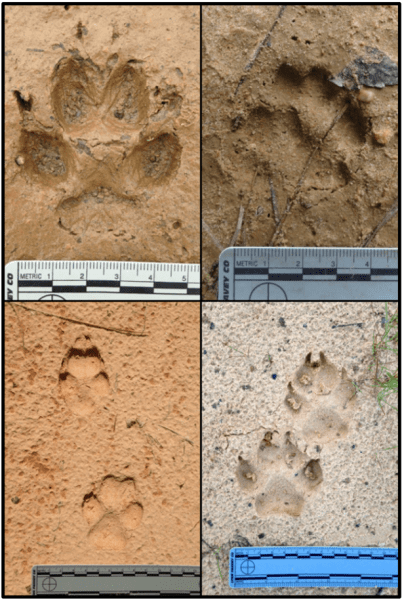
Figure 3. Top left: Red fox track. Top right: Gray fox track. Bottom left: Coyote tracks. Bottom right: Domestic dog tracks. (Photo credit: Nicholas W. Sharp).
The red fox is adaptable to most habitat types but prefers open areas with moderate cover. They are commonly found where woodlands are interspersed with farmlands and are present in urban and suburban areas. Gray foxes prefer habitats with dense covers, such as thickets, riparian areas, or swampland. Like the red fox, gray foxes can be found in urban and suburban areas where suitable habitat exists.
When it comes to food habits, foxes are opportunists. They may feed on rabbits, mice, birds and their eggs, insects, and various plant materials. Gray foxes are the most omnivorous of North American fox species. In agricultural settings, foxes may kill fawns, piglets, lambs, and poultry. Red foxes sometimes bury some of their food in caches for later consumption.
Red foxes dig their dens for cover, often using the same ones for several generations. They may also use abandoned burrows of woodchucks. Gray foxes commonly use wood piles, hollow trees, or brush piles as den sites. They mark their territories with feces and urine.
Because of their adaptability, red foxes can be found in urban and suburban settings and have established breeding populations in some urban areas. Where suitable habitat exists, gray foxes can also occur in areas altered by humans. They are commonly found near agricultural lands where suitable habitat exists nearby. Their occurrence in urban and suburban areas and agricultural landscapes makes the protection of people and domestic animals particularly significant, as foxes can cause health and safety concerns for people and domestic animals in these settings.
Identification of Damage & Safety Concerns
Foxes can quickly adapt to human-dominated environments and potentially cause conflicts by sharing this space with humans. Most human-wildlife conflicts are associated with red foxes, although gray foxes can also cause problems in some areas. Because foxes are stealthy and typically hunt at night, it is sometimes hard to identify fox damage without physical signs. However, foxes can be detected using commercially available trail cameras. Foxes are opportunists, and those living in urban and suburban areas and agricultural landscapes can kill livestock and small pets. Foxes can cause serious conflicts with poultry producers, killing turkeys, chickens, ducks, and geese and feeding on their eggs. Animals that foxes kill are usually carried away from the kill site to the den and uneaten parts are buried.
While foxes may not directly damage structures, their dens can cause unpleasant smells and sights in the vicinity. Their burrows can also cause undesirable damage to landscapes in urban and suburban areas, and foxes may cause significant damage to landscapes when digging for prey. Foxes can also cause human health concerns through the transmission of disease (i.e., zoonoses) to humans or domestic animals. Rabies is a neurologic disease that, if left untreated, results in death for animals and humans that contract it. Red and gray foxes can act as reservoirs for the rabies virus, transmitting it to humans through bites that allow saliva to enter the body. Foxes may also act as reservoirs for scabies or sarcoptic mange, a skin disease caused by mites. Transmission to humans is likely to occur through direct contact with the infected animal or indirect contact with contaminated materials; however, transmission to pet dogs is much more common. Canine distemper may also be transmitted to pets through contact with an infected fox, although it is rare in red foxes.
Damage Prevention & Control Methods
Foxes are furbearers and game animals in Alabama and are, therefore, governed by hunting and trapping laws. There is no closed season on hunting fox; however, any trapping is limited to legal furbearer season by licensed fur catchers only. Foxes may be hunted during daytime or nighttime hours; however, nighttime hours are with dogs only.
The following are control methods that can be used to limit conflicts with red and gray foxes regardless of where they may occur.
Habitat Modification. In some cases, human-generated resources, such as discarded food, attract foxes to a particular area. To reduce these resources, secure garbage, compost piles, pet food, and bird seed. When possible, feed pets indoors, limit the food to an amount the pet can consume in one sitting, or remove leftover food before night. Remove excess bird seed on the ground that may be attracting mice, which can, in turn, attract foxes. Rodent control may also be necessary to eliminate rodents attracting foxes to your yard.
Exclusion. Foxes can be excluded from areas by constructing a net or woven wire fence around the protected property. Wire fence openings should be 3 inches or less, and fences should be at least 5 feet tall. To restrict foxes from digging underneath the fencing, bury the bottom of the fence 1 to 2 feet with an apron of net wire extending at least 12 inches outward from the bottom. Some foxes may be able to climb over fences, so a wire top or roof may be necessary to exclude them from a particular area effectively. When electric fencing is economically feasible, a three-wire electric fence with wires spaced 6 inches, 12 inches, and 18 inches above the ground may be used. Net and electric wire fence combinations can also be used. The use of fencing to exclude foxes may not be economically feasible in some cases. Consider construction costs, protected areas, the protected area’s relative value, and ongoing maintenance costs.
Frightening. Foxes can be frightened from an area by motion-activated sprinklers, noise-making devices, and lights. Motion-activated sprinklers are one of the easiest solutions for residential areas because they will not disturb neighbors. Noise-making devices, such as propane exploders, timed tape recordings, amplifiers, or radios, can reduce fox activity in an area, but check local noise ordinances. Flashing lights can reduce fox activity in small areas or livestock or poultry enclosures. However, because of the foxes’ adaptability, these options may only temporarily reduce fox activity in a particular site. A combination of frightening techniques used at irregular intervals is likely most effective in avoiding habituation.
Large dogs may also deter foxes. Be sure to keep pet food stored inside to avoid attracting foxes in the first place.
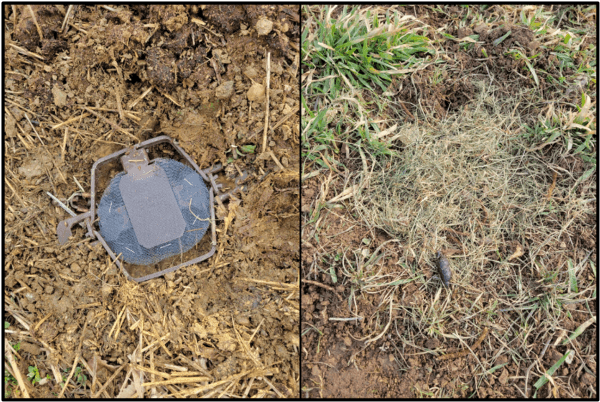
Figure 4. Left: Foothold trap with pan cover. Right: Foothold dirt-hole set using grass to cover trap. (Photo credit: Daniel Lynch.)
Trapping. Trapping can be an effective method to manage fox damage. They should be set by knowledgeable trappers, so the foxes do not become wary of trapping methods. In Alabama, foxes are classified as furbearers, so appropriate permits to trap nuisance animals outside the defined furbearer season must be obtained from the Division of Wildlife and Freshwater Fisheries. When properly deployed, foothold and cage traps can be suitable for capturing nuisance foxes.
Numbers 1 1⁄2, 1 3⁄4, and 2 double coil spring traps and Numbers 2 and 3 double long spring traps are suitable for foxes. Traps with offset and padded jaws will cause less injury to the confined fox and facilitate the release of nontarget animals. Traps set along trails, at entrances of fields, and near carcasses may be most effective in capturing a nuisance fox. When using foothold traps, the dirt-hole set is one of the most selective and efficient for capturing a fox (figure 4).
To set a dirt-hole trap, start by digging a bait hole about 6 inches deep and 3 inches in diameter at a downward angle just behind the spot where the trap is to be placed. Put four or five drops of scent in the back of the hole. Dig a hole 2 inches deep back from the bait hole to allow for a hole large enough to accommodate the trap and chain. Fasten the trap chain to a stake with a chain swivel, and drive the stake directly under the place where the trap is set. Fold and place the chain under or beside the trap and set the trap about 1⁄2 inch below the ground. The pan of the trap should be approximately 5 inches from the entrance of the hole with the pan slightly offset from the center. Use waxed paper, light canvas, or light screen wire to cover the area between the jaws and the trap pan. Lightly cover the entire trap with sifted soil up to the original ground level.
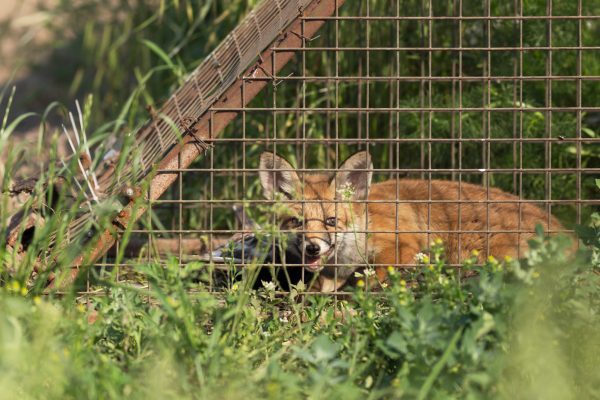
Figure 5. Red fox (Vulpes vulpes) in cage trap.
Cage traps (figure 5) can be suitable for capturing juvenile foxes living in urban and suburban areas where foothold traps may be controversial. Although foothold traps are much more humane than many members of the general public think, the use of cage traps does eliminate any complications that would arise from trapping domestic dogs. But cage traps are generally less effective. A double-door cage trap that measures 42′′ x 8′′ x 8′′ can be set at den entrances to capture foxes exiting their dens. Check traps often to prevent harm to captured animals.
Shooting. Shooting can be used as a lethal method for the control of foxes. The American Veterinary Medical Association (AVMA) lists gunshots as an acceptable method of euthanasia when other methods cannot be used. Check with your local municipality on local laws regarding the discharge of firearms.
Commercially available predator calls or artificial rabbit distress calls can be used to attract foxes to a particular area when attempting to shoot a nuisance fox. A shotgun with buckshot is the preferred method of dispatch for foxes within 50 yards, and a small-caliber rifle is preferable for animals from 50 to 400 yards.
Repellents. Repellents, such as coyote and dog urine, can be used as fox repellents. However, there are no data to indicate that these repellents work as a long-term solution. They should be used on a temporary, case-by- case basis.
Toxicants. Currently, no registered toxicants are available for use in fox damage control in Alabama.
Handling
Relocation. The state of Alabama has restrictions on the relocation of foxes. Alabama Division of Wildlife and Freshwater Fisheries Regulation 220-2-.26 states that no person, firm, corporation, partnership, or association, shall transport species of coyote, fox, raccoons, skunk, wild rodents (such as mice, rats, squirrels, and chipmunks) or rabbits within the state, along with many other species, unless specifically authorized by a permit. To prevent potential health risks, Alabama prohibits the release of live foxes across a county line or major river drainage from where the fox is captured.
Translocation. The translocation of foxes outside of their original home range or across a county line or major river drainage is prohibited in the state of Alabama.
Euthanasia. When appropriate, euthanasia can be used for problem foxes, especially when handling an aggressive fox that has attacked a human or domestic animal. When euthanizing a fox, it is important to consider both human safety and animal welfare. Foxes should be euthanized quickly and humanely to reduce stress and pain to the animal. Carbon-dioxide euthanasia is suitable for foxes. When performed correctly, shooting a fox in the back of the skull or cervical dislocation are two humane methods. Check with your local Department of Conservation, county Extension office, or a professional nuisance wildlife control operator for appropriate ways to euthanize a trapped fox.
Carcass Disposal. Fox carcasses should be disposed of properly and safely. When handling or disposing of carcasses, wear gloves, avoid bodily fluids, such as blood, saliva, and urine, and wash your hands with warm, soapy water.
Check your local city ordinances for proper carcass disposal guidelines. Some municipalities allow disposal in common household garbage or require that the carcass be disposed of with other biohazard materials. Carcasses may also be disposed of through burial and incineration. Consult state and city ordinances when determining the best avenue for carcass disposal.
Conclusion
While foxes can cause conflicts in urban and suburban environments, these species also have a positive ecological role. Foxes can help control populations of their prey animals, such as rodents and rabbits, and disperse seeds by eating fruit. Urban expansion, habitat loss, and the reduction of natural predators have resulted in these species occupying human environments. Foxes inhabiting urban and suburban settings can potentially cause a variety of human-wildlife conflicts. Still, by following the damage control methods outlined above, conflicts can be kept to a minimum.
 Anna Lizana, Master of Natural Resources Student, and Wesley Anderson, Extension Specialist, Assistant Professor, both in Forestry, Wildlife, and Environment, Auburn University
Anna Lizana, Master of Natural Resources Student, and Wesley Anderson, Extension Specialist, Assistant Professor, both in Forestry, Wildlife, and Environment, Auburn University
New August 2022, Identification & Management of Foxes in Alabama, FOR-2119

